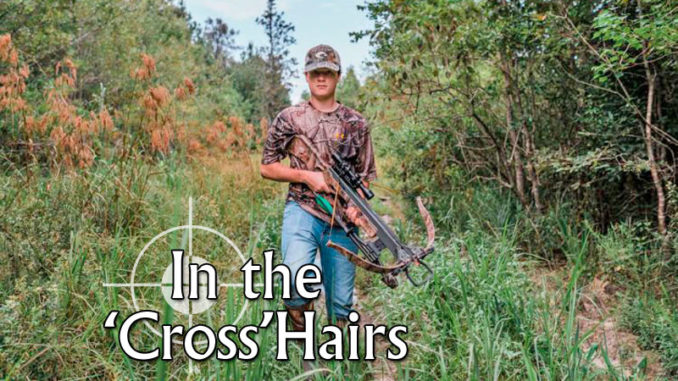
Crossbows are still looked down upon by some traditional bowhunters, but they definitely give people another option during archery season. Here’s what you need to know if you’re heading into the woods with one this fall.
The constant chatter about how crossbows are for cheaters still fills Stephen Chapman’s ears, several years after the grumbling first started.
That’s because Chapman, the bow tech at Dockside Marine in Bogalusa, deals with bowhunters on a daily basis.
“A lot of people still don’t accept crossbows,” he said. “But the way I see it, if shooting a crossbow allows you to enjoy the outdoors and keeps you legal, then go for it … up to a point.”
Keep your options open
Chapman frequently sets his customers up with either Mission or CamX crossbows. He even bought one for himself a couple years ago, but has never used it in the woods.
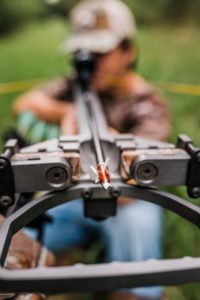
Although he believes they’re great for some people, he feels like they do take away the primitive part of hunting with a bow.
“I had a pacemaker put in a while back, so I bought one,” Chapman said. “Pulled it out the box and put it together, and without making any adjustments to it, I was putting all four arrows in a 2-inch circle at 70 yards. But the doctor removed my pacemaker before hunting season started, so I never even took it to the woods. As long as I can pull back a compound bow, that’s what I’m going to use.”
Chapman’s personal experience perfectly portrays his feelings about crossbows.
He thinks they’re great tools for people who aren’t physically able to pull back compound bows — disabled vets, people with bum shoulders and youngsters — because they allow those folks to still be able to enjoy a hunt.
“For me, archery is archery,” Chapman said. “You’ve got to do your homework and get up close and personal to make your best shot… typically 40 yards or under. Even when I wind up having to use a crossbow, I’m still going to try to get close. Just because you can shoot a deer at 100 yards with a crossbow doesn’t mean you should. That’s about the only issue I have with them — the temptation to make too long of a shot just because you can.”
Primitive brush rifles
There’s no doubt some people buy crossbows with the idea of being able to make a long-range shot in October. Some units are shooting arrow speeds in the mid 400-feet-per-second range, with 2-inch groups out to 100 yards.
“It’s almost like hunting with a .30-30,” Chapman said. “With an old brush rifle, you don’t need a tack-driver. Three rounds in a 3-inch circle at 100 yards is good enough. The only real differences are you’re shooting arrows with a crossbow instead of bullets, and you can use one during archery season.”
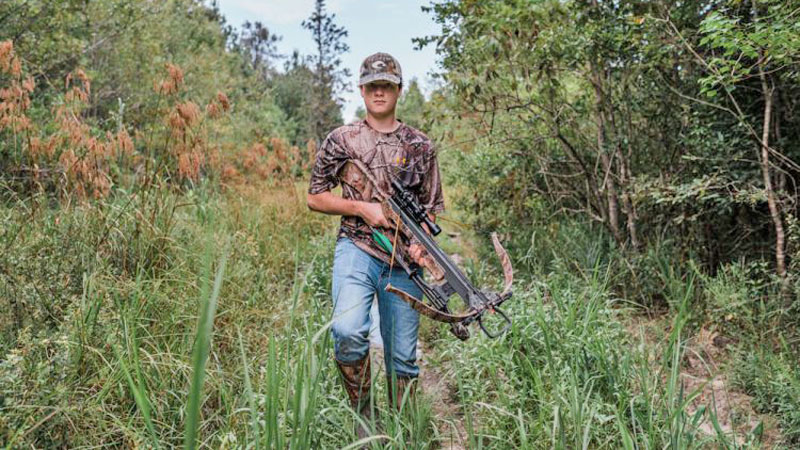
Although Chapman believes most of the hunters he sells crossbows to wind up taking shots at the same distances they would with compound bows, he says knowing in the back of their minds that they could make an 80-yard shot resonates with them.
“What you’ve got to remember, though, is that a crossbow bolt is going to have a much higher arc to the point of impact 100 yards downrange than a rifle,” he explained.
“And while it might feel like you’ve got a primitive rifle in your hands, the reality is that the tunnel vision you get when a deer walks out could keep you from seeing things above your line of sight that might impact your bolt at the top of the arc. Anything — a limb or even a twig — touches your bolt, and a lot of stuff can go wrong.”
The only situation in the field that would make Chapman comfortable making a 70- or 80-yard shot with a crossbow would be an open lane in perfect conditions. At that point, he agreed that it would be very much like using a rifle that shoots an arrow.
Need for speed
With crossbows running a full 100 feet-per-second faster (440 fps) than even the fastest compound bow (340 fps), there’s no doubt they fulfill the need for speed — assuming you need all that speed to begin with.
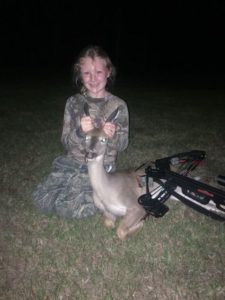
In Chapman’s line of work, the first thing customers ask him about when looking at a crossbow or a compound bow is speed, because everybody thinks speed kills. Hunters feel like they need the fastest crossbow they can get because of their collective fear that a deer will jump the string.
“No doubt crossbows give you the advantage there,” he said, “but the way I see it the faster you can shoot, the faster you can miss. Sure, that arrow is going to get downrange quicker, but what’s it going to do when it gets there?”
More important than speed
Chapman agreed with the assertion that the faster the arrow the flatter its flight, which could help in a longer shot, but he believes kinetic energy is more important than speed.
“I wish people would get off the speed kick” he said. “I’ve tried shooting flatter and faster, but it’s like throwing a ping pong ball at 500 miles an hour; it’s going to sting really badly. But take a golf ball and throw it at 100 miles an hour and it’s going to break bones.”
This is why Chapman is an advocate for a little bit slower crossbow shooting a little bit heavier bolt.
“Although a crossbow has a speed advantage, it comes at a price,” Chapman said. “A compound bow is a lot quieter than a crossbow. We do have dampeners you can put on them, and some of the more high-end crossbows like the CamX A4, Mission Sub 1, and the Ravin … they’re the quietest and fastest — top of the line. I work on a bunch of fast bows, though, and the faster a bow is the more likely you are to have problems with it.”
Crossbow advantages
With a little imagination and some extra money, a compound bow hunter could conceivably hunt from just about any kind of stand; however, hunting with a crossbow makes it easier to hunt from whatever stand you choose.
“You really have no stand limitations with a crossbow,” Chapman said. “None of this is set in stone, but compound bow hunters typically hunt your lock-ons, climbers and ladders. You can hunt in box and ground blinds, but they have to be big enough for you to draw, and you have to have those tall, narrow windows on the corners. With a crossbow, as long as you can get your scope on it, you can shoot it.”
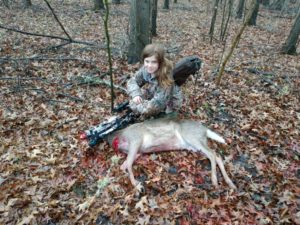
Crossbows also have the advantage of being able to take a shot with little movement, which minimizes your chances of a deer spotting you in the stand. Compound bow hunters would argue that it’s all part of the challenge of bowhunting, but there’s no arguing less movement means less attention.
“You’re sitting in the stand like you would be if you were holding a rifle,” Chapman said. “You’re already cocked and ready to go, so all you’ve got to do is pull the trigger. No worrying about having to stand up or getting busted on the draw.”
Crossbow trends
Like just about everything else in the world, the main trend in crossbows has been to make them smaller and lighter. You don’t have to think too far back to remember crossbows that had limbs that looked 3 feet wide.
“Man, when you shot those things out of a box stand those limbs would go forward, and you might wind up breaking your limbs or smoking your stand,” Chapman said. “Now the reverse limbs are popular because they move sideways and not forward. Heck, the CamX A4 is only 10 ½ inches wide.
“Compact and faster, that’s where we’re headed.”
Another trend in crossbows is for them to come in a package that includes everything you need to jump right into the woods. And a fully decked out crossbow ready to hunt can be had for $850 to $1,000.
“You’re going to spend $1,000 just for a naked compound bow nowadays,” Chapman said. “Then you’re looking at buying another $700 worth of stuff to put on it to get it ready to shoot. Of course, you could go higher or lower on crossbows and compounds depending on what you want to spend, but those are good averages.”
Crossbow setup
Since most crossbows already come with the bolts, there isn’t much to consider except for which broadhead you’re going to shoot.
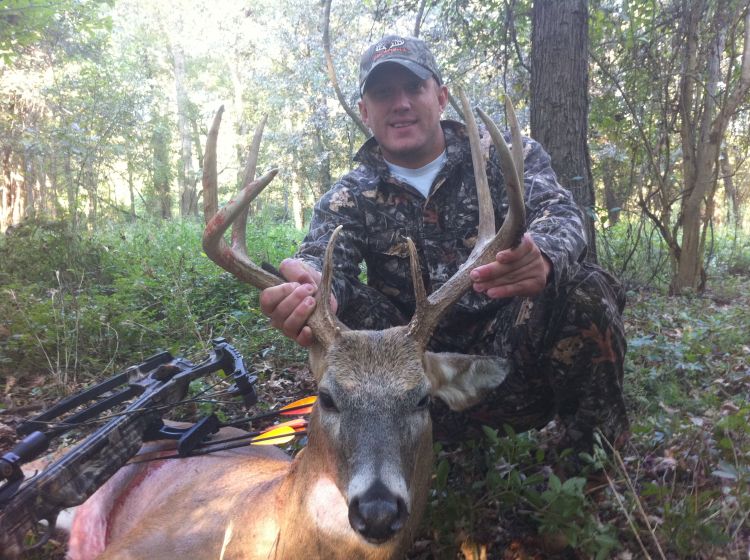
While acknowledging that there are some good fixed blades on the market, Chapman said he personally would go with a mechanical blade because they consistently fly a lot better than fixed blades.
“I want the head that’s going to fly most like my field points,” he said. “And most mechanicals are going to fly like that right of the box. Other than that, I’d shoot a 100-grain head on a 100-grain shaft with a 50-grain insert. That’s going to give me 150 grains forward weight, which is going to give me more accuracy, more momentum and more penetration when it hits the animal.”
Regardless of all the negative crossbow talk he’s heard the last few years, Chapman said he likes the crossbow effect because they allow a lot more people to hunt during archery season.
“Outside of taking unethical long-range shots, I can agree with them 100 percent,” he concluded. “It’s all about enjoying the outdoors and the wildlife. If a crossbow makes it possible for you to get in the woods, then so be it.
“Just get the best setup you can afford. As long as you have fun and are legal, don’t worry about what other people think.”


